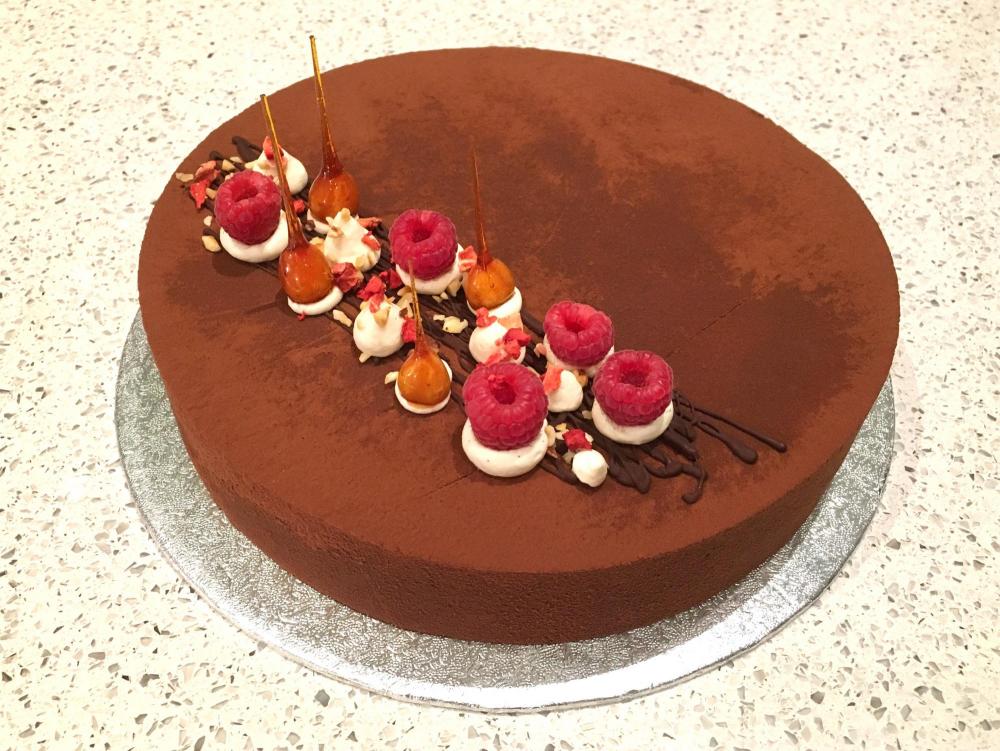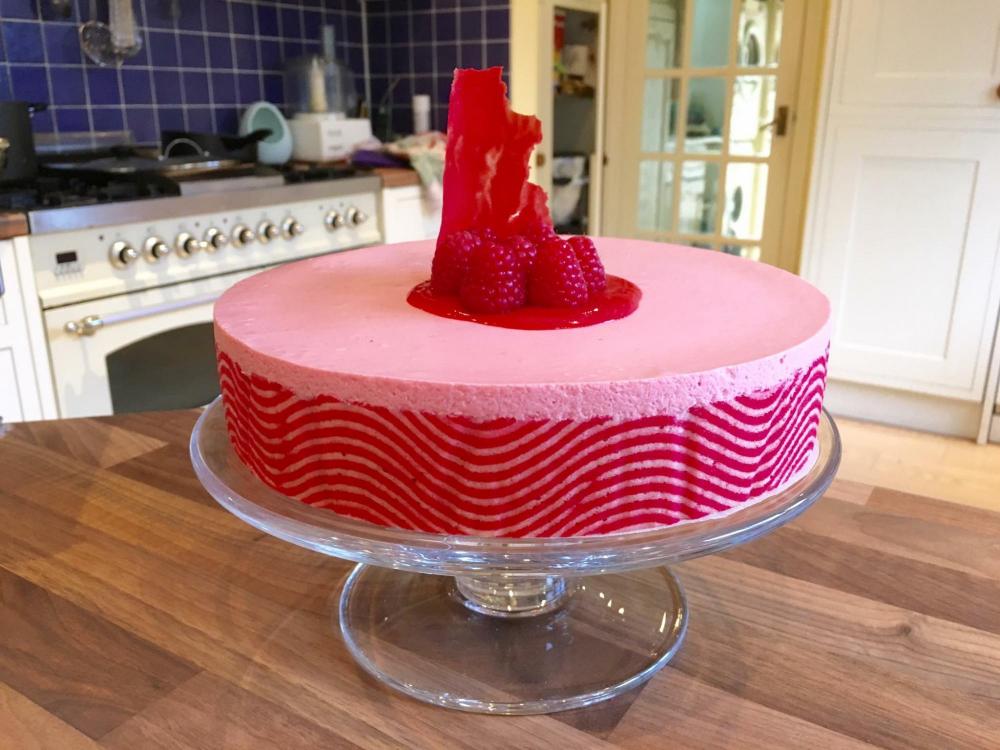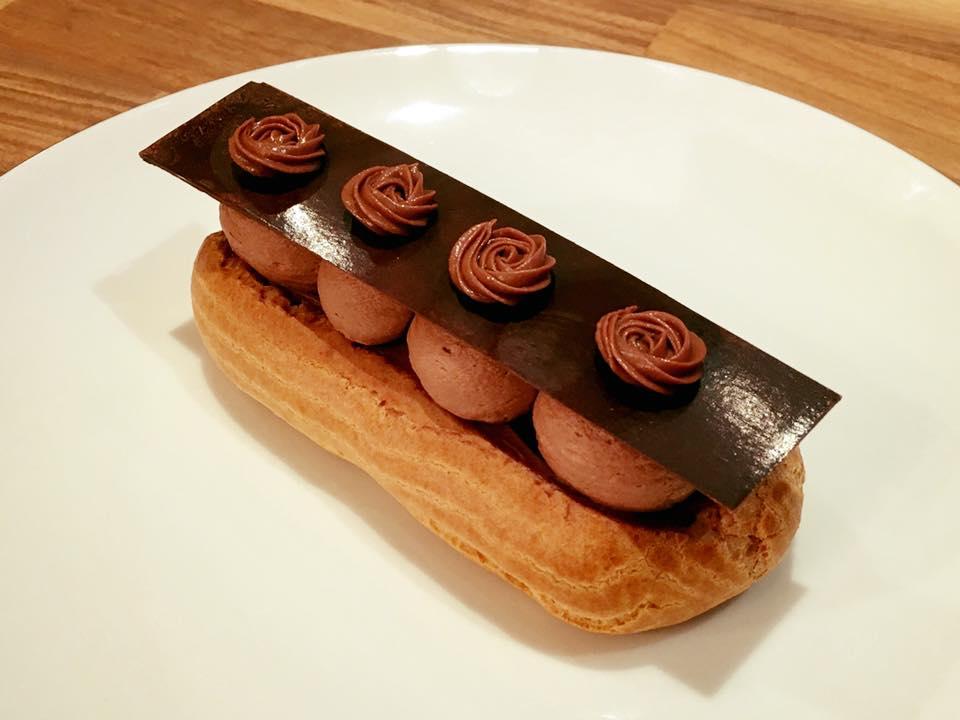-
Posts
139 -
Joined
-
Last visited
Recent Profile Visitors
1,973 profile views
-
I'm happy to translate things from French. This is, however, a long article which would take some time to translate properly: if there is a particular bit you'd like to understand better just let me know.
-
Which recipe is this, please? I only know his marshmallow recipe in Chocolates and Confections which I don't think is for piped marshmallows.
-

Your Daily Sweets: What Are You Making and Baking? (2016 – 2017)
RichardJones replied to a topic in Pastry & Baking
I'm afraid I don't have a recipe with quantities, but I can tell you what I did. Half (or so) of my raspberries I cooked down in a saucepan with ~25% their weight in sugar. I waited until they disintegrated completely then boiled for a minute or so. Then I melted in some hydrated gelatin (enough to produce a soft-set jelly). Then I added in the rest of the raspberries halved/quartered. In other words, fresh chunks of raspberry set into a quick raspberry jam. The idea was to get those two different textures. I also ground in a good amount of black pepper. Hope this helps. Thank you all for your kind feedback. -

Your Daily Sweets: What Are You Making and Baking? (2016 – 2017)
RichardJones replied to a topic in Pastry & Baking
A chocolate, praliné, raspberry and hazelnut entremets. Took a shot of the slice this time as it was requested before. Frustratingly my cocoa butter spray died on me so I had to resort to a dusting of cocoa powder. By the time it came to taking photos there had been quite a lot of moisture migration—too bad!- 489 replies
-
- 18
-

-

Your Daily Sweets: What Are You Making and Baking? (2016 – 2017)
RichardJones replied to a topic in Pastry & Baking
Thank you Thanks for the Crepes. I'm afraid I didn't get a good shot of the inside—it's always hard with moussey things. -

Your Daily Sweets: What Are You Making and Baking? (2016 – 2017)
RichardJones replied to a topic in Pastry & Baking
Christmas entremets with layers of chocolate mousse, eggnog crémeux with fresh pear, and cinammon/nutmeg meringue.- 489 replies
-
- 17
-

-
Thank you all for your replies. Invert sugar and oil were my first ideas too so I'm glad to see them backed up. I have never come across oat flour before so thank you for that suggestion too. Time to play!
-
A friend of mine is trying to develop a recipe for a soft/chewie cookie which will stay chewy when stored at ambient temperature in a shop after distribution (ie for some time!) I don't know anything about cookies so if you have any ideas or recipes you'd recommend looking at I'd be very grateful. Thank you for your suggestions.
-

Your Daily Sweets: What Are You Making and Baking? (2015 – 2016)
RichardJones replied to a topic in Pastry & Baking
- 486 replies
-
- 15
-

-
This is at the limits of my chemistry but I don't think that reducing lemon juice will affect its power to set the cream so in a sense it's up to you. (I'd be happy to be corrected on that point!) What I do know from experience is that I've happily reduced the lemon juice in a reliable recipe (Claire Clark's) by half and had excellent results. The point of the posset, as it were, is that the lemon juice sets the cream. If you set cream with gelatin you have a panna cotta! However, there's nothing at all to stop you adding some gelatin if you want a product firmer than lemon juice alone can offer. But the joy of both a good posset and panna cotta as far as I'm concerned is that they are only just set.
-
If you want a thicker set, a tip which hasn't been mentioned so far is to reduce the lemon juice. That gives you an intense lemon flavour without the dilution. In addition, make sure you leave it to set for long enough. In the Guardian article she recommends 'a couple of hours'. I would suggest at least overnight for a firm set. I'd also recommend serving it with some shortbread which will give you some texture and sweetness which work well with the smooth, tart cream.
-

Your Daily Sweets: What Are You Making and Baking? (2015 – 2016)
RichardJones replied to a topic in Pastry & Baking
It was Mothering Sunday in the UK this week so I made eclairs using some single origin Mexican chocolate I have. The body is filled with a chocolate/praliné crémeux. This is topped with the visible balls of chocolate chantilly. Inside each of the balls of chantilly is a toasted hazelnut. The roses on top are made with the crémeux.- 486 replies
-
- 18
-

-
Hello Edward. The post you mention isn't showing up but I'm familiar with how Mycryo is made. I'm not quite sure the link you are making here with the production process for Mycryo. But I can endorse it because, quite simply, it works. It's a method which also comes endorsed by chefs as respected as Eddy Van Damme (eg in this post). It ought to go without saying that you need to use cocoa butter that is in temper, just as you need to use chocolate that is in temper for classic seeding.
-
I missed this topic when it first appeared. I've used Mycryo a bit. Just my personal response to the points above: I've found it very reliable. It produces a good amount of pre-crystallisation when used according to the instructions. Personally, I've never had a problem with it not melting. Shallow frying is the recommended use I've seen pushed and the 'unique' feature here is that you can apply Mycryo to the surface of your product by dipping it onto a plate of Mycryo (think the same technique you would use to flour/breadcrumb something) to get a thin layer of cocoa butter all over. I know some chefs do use this. Equally, it's not quite the revolution the manufacturer would like you to believe... There's quite a wide window you can add the Mycryo at for satisfactory results. It is quite similar to seeding but you don't have to go around fishing out unmelted bits with a dipping fork... :-) This is a good method too but my microplane won't produce something finer-grained than Mycryo! I think that covers the points raised but don't get me wrong: I'm not a wild defender of Mycryo. There are many different ways to temper and each has its advantages. You just need to pick the right one for whatever application you have. Mycryo is great if you've ended up without seed chocolate, for example, or you only want to temper a small amount, or you don't want to mess around with Microplanes and scales. Mycryo is the most hassle-free method to temper I can think of - but there isn't much in it. The drawback is it is expensive - but it's cheap enough to have some in storage somewhere in case it might be useful.








